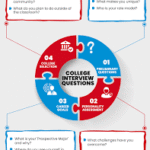The price of attending college in the United States.has been climbing for years, but with inflation now pushing everyday prices even higher, students and families are feeling more financial stress than ever. As groceries, rent, and gas become more expensive, college tuition is also rising, adding another layer of concern for those planning to pursue higher education.
Let’s explore how inflation is affecting tuition and what students can do about it.
Understanding Inflation and Its Ripple Effects
When the cost of goods and services rises over time, inflation occurs. You get less for the same amount of money when inflation is strong because money loses buying power.
This isn’t just something that impacts shopping carts or gas pumps. Inflation also affects:
- Utility and energy bills
- Teacher and staff wages
- Equipment, supplies, and maintenance costs
- Technology upgrades in schools
All of these increased expenses force colleges to make tough choices and one common outcome is raising tuition to cover the difference.
Why Do Colleges Raise Tuition During Inflation?
Colleges, just like any other organization, have to manage rising operational costs. When inflation spikes, schools need more money to continue functioning efficiently. This includes:
- Paying faculty and staff fairly to stay competitive
- Covering higher electricity, water, and heating bills
- Maintaining and improving campus facilities
- Investing in digital infrastructure and tools
Instead of cutting essential services, many institutions choose to adjust tuition and fees which directly affects students.
Tuition Is Growing—and Fast

According to the College Board, tuition for the 2023–24 academic year was:
- About $10,940 at in-state public universities
- Around $28,240 at out-of-state public colleges
- Over $41,000 at private nonprofit universities
Even small yearly increases around 3% to 5% can add up to thousands of dollars over the course of a four-year degree. Inflation only adds fuel to this ongoing rise.
What This Means for Students and Families
For many families, these tuition hikes bring serious financial challenges. Some common effects include:
- Taking out larger student loans, which means more debt after graduation
- Putting in longer hours at school, which may negatively impact academic achievement
- Limiting school choices, especially among lower-income families
Even with financial aid, some students may end up choosing less expensive schools, delaying enrollment, or skipping college altogether.
How Are Colleges Responding?
Thankfully, some colleges are making efforts to ease the burden. Measures include:
- Tuition freezes, where the price stays the same for all four years
- Expanding financial aid programs, including scholarships and grants
- Offering payment plans and work-study opportunities
- Creating guaranteed tuition plans, so students know what they’ll pay from day one
These actions help, but they don’t always fully match the rising pace of inflation.
The Trouble with Financial Aid and Loans
One of the biggest concerns is that financial aid hasn’t kept up with the cost of college. For instance, Pell Grants once covered a large portion of tuition but now they cover far less.
And if inflation affects interest rates on student loans, the cost of borrowing money to pay for school becomes even higher. This creates a double challenge: more debt and tougher repayment conditions after graduation.
What Can Students Do?
While inflation is out of your control, there are smart strategies to reduce its impact:
- Apply for scholarships early — many go unclaimed each year
- To increase your eligibility for financial help, always submit the FAFSA.
- Compare schools carefully, looking at both tuition and living costs
- Consider starting at a community college or staying in-state for tuition savings
Also, look for part-time jobs, internship opportunities, or work-study programs that offer both income and experience.
Final Thoughts
Inflation is more than just an economic trend it’s a real challenge for students trying to pay for college. As tuition continues to rise, it’s important for families to plan ahead, understand the full cost of attendance, and explore every possible form of aid.
While the road to college may be more expensive, it’s still possible to reach your goals with the right information, support, and preparation.










